In my practice, I am very focused on creating lifelike restorations that exceed my patients’ expectations. I often find that the standards I hold myself to are higher than those of many of my patients; they are happy with the outcome, but I can always find room for improvement. This mindset is expensive; I have purchased a lot of different materials, instruments and equipment to help me provide the best care. One aspect of my practice where I wanted to improve my game, while streamlining my inventory, was direct composite restorations. I had the opportunity to give OMNICHROMA (Tokuyama Dental America) a try and I have found two particular scenarios where it has exceeded my expectations.
Shade Matching
If you have to have one composite for every single shade and translucency of tooth structure, you have to buy a myriad of different composites. I’ve done that and it is expensive and incredibly disappointing when unused composite expires. OMNICHROMA has been formulated with a special shade matching technology so that a single composite can be used for nearly every clinical scenario. In situations where darkened tooth structure needs to be blocked out or in anterior restorations that require a reduction in translucency, OMNICHROMA BLOCKER (Tokuyama Dental America) is a complimentary material that can be used with OMNICHROMA.
I have been using OMNICHROMA for several months and it has become my go-to for all posterior teeth. I have used it in many anterior situations, however I still hesitate and ask myself “would this be a good case for OMNICHROMA, or am I better off using Estelite Omega (Tokuyama Dental America) or Estelite Sigma Quick (Tokuyama Dental America)?” I have become more reliant on OMNICHROMA for anterior teeth and I recently treated a patient and something interesting happened. My patient presented, requesting to replace a composite on the facial surface of tooth #7 because the composite that she had has become rough and discolored (see fig. 1). I removed the offending composite restoration and secondary stain, ensured caries removal and restored the tooth with OMNICHROMA (see fig. 2). Everything about the diagnosis and treatment was very routine, except for one thing: I did not pick up a shade guide to evaluate the shade of the tooth before proceeding. In fact, I did not refer to my shade guide at all during the appointment!
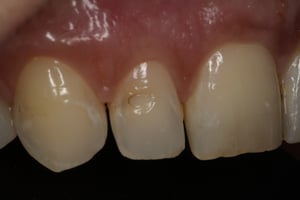 Fig. 1: Initial presentation: note the failing composite restoration on the facial of tooth #7. The patient noticed the deterioration of this restoration and requested a replacement.
Fig. 1: Initial presentation: note the failing composite restoration on the facial of tooth #7. The patient noticed the deterioration of this restoration and requested a replacement.
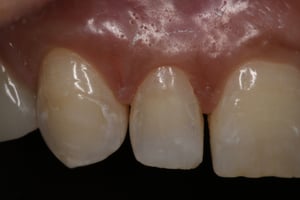
Fig. 2: Final restoration #7: The composite restoration (and all secondary caries) was removed and the tooth was restored with OMNICHROMA.
Closure of Occlusal Screw Access Channels/ Endo Access Preparations
I have found closing screw access channels in screw-retained implant crowns and restoring endo access preparations through crowns to be underwhelming. It is common to restore both of these scenarios with composite resin and the outcome is consistently a grayish circle on the occlusal surface of the crown. Most patients don’t mind it, but I have always thought there should be a better way. I have found that OMNICHROMA and OMNICHROMA BLOCKER are game-changers in these clinical scenarios. OMNICHROMA BLOCKER blocks out underlying discolorations to allow OMNICHROMA to blend with the overall tooth color instead of blending with the discolorations.
I had a patient come in to deliver a screw-retained implant crown on a mandibular 1st molar (see fig. 3). The crown was tried in, fit was confirmed and it was time to seal the screw access hole. Teflon tape was placed over the screw; OMNICHROMA BLOCKER was placed to the height of the metal inside the screw access channel (see fig. 4). OMNICHROMA was then placed to the height of the occlusal aspect of the screw access channel. Occlusion was verified and the composite was polished. The final result was satisfactory to the patient and I believe that it is a significant improvement to the occlusal screw access restorations of the past (see fig. 5).
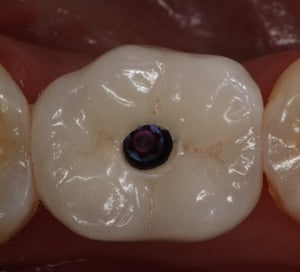 Fig. 3: Occlusal view of a screw-access channel on a screw-retained crown on a mandibular 1st molar.
Fig. 3: Occlusal view of a screw-access channel on a screw-retained crown on a mandibular 1st molar.
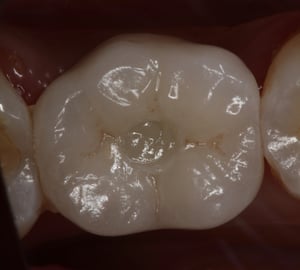 Fig. 4: Restoration in progress: Teflon tape was used to cover the head of the screw and extended to about 1.5 mm from the margin of the metal and ceramic. OMNICHROMA BLOCKER was placed just beyond the metal-ceramic junction to block out the darkness from the metal.
Fig. 4: Restoration in progress: Teflon tape was used to cover the head of the screw and extended to about 1.5 mm from the margin of the metal and ceramic. OMNICHROMA BLOCKER was placed just beyond the metal-ceramic junction to block out the darkness from the metal.
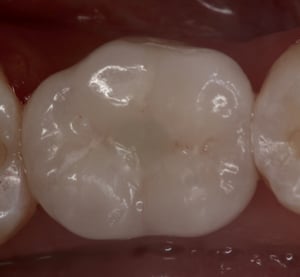 Fig. 5: Final restoration: OMNICHROMA was layered above OMNICHROMA BLOCKER to create a beautiful final result.
Fig. 5: Final restoration: OMNICHROMA was layered above OMNICHROMA BLOCKER to create a beautiful final result.
The addition of OMNICHROMA in my practice has been extremely impactful. The esthetics of my composite restorations is much more predictable and it greatly benefits the office to maintain a smaller inventory of materials.

